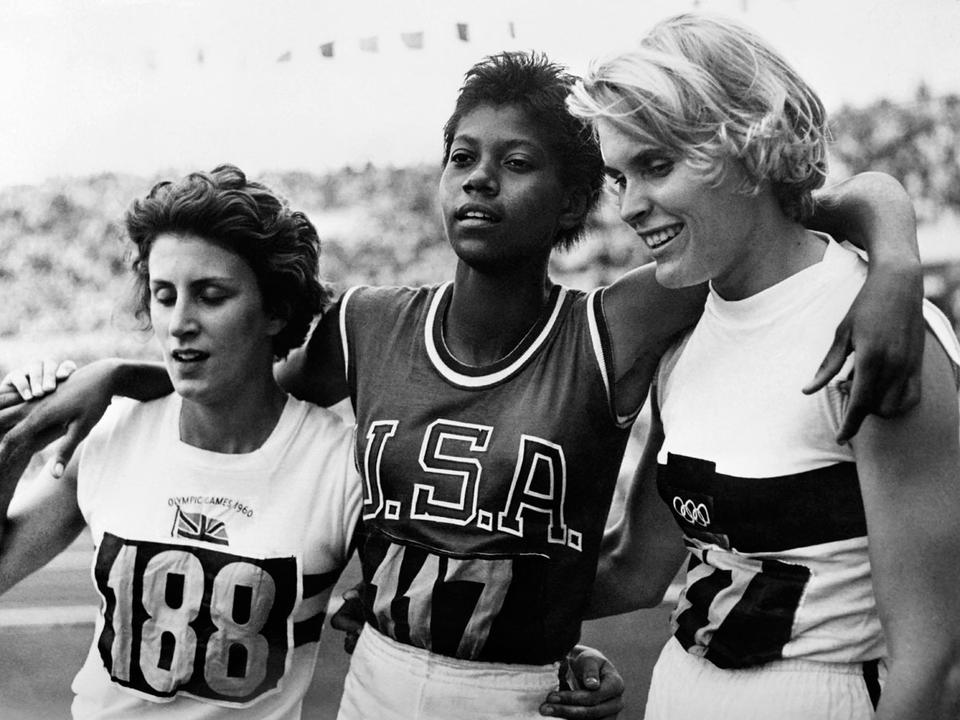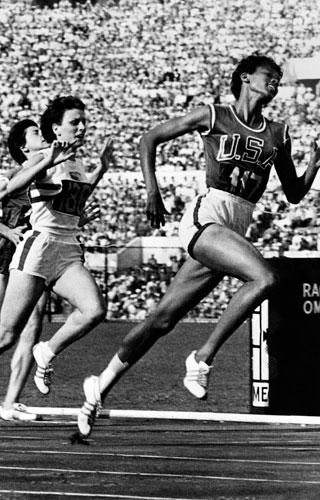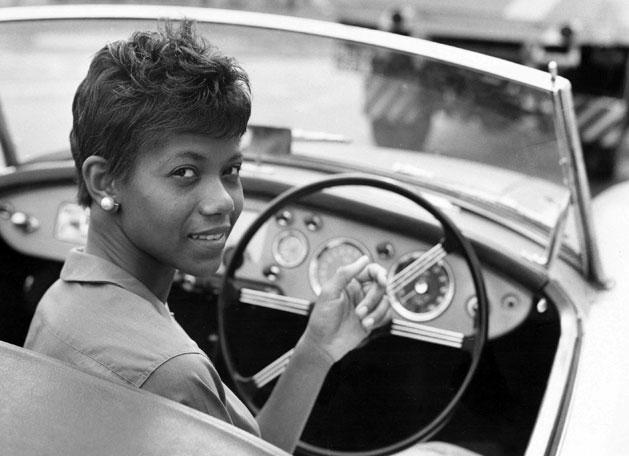The young girl suffering from polio has become an icon of America, and her career has reached the top since her retirement at the age of 22. Wilma Rudolph lived only 54, but she put her name on the book of the history of the most influential athlete of all time.
 |
| Wilma Rudolph stood on top of the podium three times in Rome after the bronze relay in Melbourne (Photo: AFP) |
ad
He was twelve years old when he learned to walk again. Don’t run away, don’t walk. Compared to being celebrated by the world at the age of twenty, the first twelve years were a constant struggle for survival and then for full human existence. Born at a weight of half a kilogram, nearly contracted four years after the pneumonia associated with scarlet fever, then contracted polio from the deadly polio virus, and only his mother, Blanche (who died the same year in 1994 as a hero), persevered in four shoes. Orthotic and that was thanks to the fact that he made a full recovery within eight years. Lady Rudolph was transported every day from Clarksville, Tennessee, to Nashville, a hospital about fifty miles away – the closest, where blacks were also supplied to America, which has declared itself a Democrat and the world’s greatest leader since World War. II. His father, Ed, Railksville ranger, has been married twice and has a total of 22 children, and Wilma was 20th in the class. „There were nineteen kids in the house, and we had to hurry to find at least one morsel when we got to the table! “ He later gave a logical explanation of why he took his legs and lightning as an adult.
|
Boy: June 23, 1940, Saint Bethlehem deceased: 1994. November 12, Brentwood nationality: American summit: 11.41 and 11.2 (100m – electronic scale: 1960 and manual measurement: 1960), 22.9 (200m – manual measurement: 1960) consequences: 3x Olympic champion (100m, 200m, 4x100m – 1960), Third Olympic (4x100m – 1956) Acknowledgment: Athlete of the Year (1960 – UPI), Female Athlete of the Year (1960 – AP), member of the IAAF Hall of Fame (2014–), member of the United States Olympic Hall of Fame (1983-) |
The doctor said I would never be able to walk. My mom said, but yeah. I believed in my mom. “ Wise said Wilma. He, who crushed all the tragedies lurking around him, straightened his ugly left leg as a little kid, and the little girl became a solid teenager of 180 cm – he immediately went to play basketball. And by the way, he ran. So fast that sports coach Ed Temple spotted it for himself, and despite throwing 803 points in one season as a sophomore, convinced him to change the sport. Already at the age of 16 (!) He joined the 1956 Melbourne Olympic team – which made him the youngest member of the US Olympic delegation. Behind Australia, the totally changed British, as well as Betty Cuthbert, who shook them, as the third man in the US 4×100 relay, clinched a bronze medal in announcing the results, setting the old world record. (He also started at 200, pulling third with 24.6, although he would have advanced from all the others except for one.) But even then, everyone had suspected Roma would be his Olympiad.
 |
| It is no accident due to its lightweight style Comparison to Ghazal (Photo: AFP) |
Having given birth to a little girl, Yolanda, at the age of 18, she won a sports scholarship from the University of Tennessee, gave up basketball for good, and arrived in the Italian capital in 1960 as the first opportunity, among other things, to surpass Cuthbert’s 200th world record. . Wilma Rudolph started the 100 meters in the 1960 Games, winning all four of his races superbly, smashing the world record of 11.41 in the semifinals and reaching 11.18 in the final only due to the 2.8 backwind. On September 5, in windy, rainy, and choppy weather, he won only the 200 meters in Olympic history as all finalists were weaker than the qualifiers two days earlier (Rudolph first reached the Olympic peak of 23.30) – plus an hour and a half after the semi-finals. Final. The relay was just a finger exercise, for diversity, Americans also set the world record (44.50), Rudolph of course was the runner-up, then with the inhuman heat of 43 degrees 44.72, he won 0.28 with the silver medal last until 1992. To a German team unified. The title of the Black Gazella (La Gazzella Nera) goes back to the Italian press – today you can hardly get it in the current political environment … – Its popularity is unknown after the games, tens of thousands celebrate to return home on the streets of Clarksville on October 4, “Welcome to Day Wilma. “
Rome was a huge achievement for African American athletes anyway. In the first true TV Olympiad, hundreds of millions saw not only Wilma Rudolph, but boxer Cassius Clay (unprecedented future Muhammad Ali), basketball Oscar Robertson (12 times in the NBA All-Star, 1971 Milwaukee Bucks champion) and Tees Johnson ( The actor who later played, Flamter at the 1984 Los Angeles Olympics) wins in five episodes. Needless to say, they did in sport at least as much for their acceptance into the home and rights of blacks as those who fought at the forefront of politics. In addition, Wilma Rudolph not only became the first American woman, but also the first black woman to win a gold medal three times in the Olympic Games.
| The most successful mathematics in the Olympiad only: | ||||
| Noun | Year | a | H | B |
| Fanny Blankers Queen (Netherlands) | 1948 | 4 | – | – |
| Florence Griffith Joyner (American) | 1988 | 3 | 1 | – |
| Betty Cuthbert (Australia) | 1956 | 3 | – | – |
| Wilma Rudolph (American) | 1960 | 3 | – | – |
| Valerie Briscoe Hawkes (USA) | 1984 | 3 | – | – |
| Alison Felix (American) | 2012 | 3 | – | – |
Graduated from Tokyo in 1963, with a diploma as a teacher and coach, America considered him a hero, accompanied by films, books and television appearances, and he became an active participant in the civil rights struggle for blacks. His influence on the world is indescribable, and only measured by the greatest female athletes – figure skater Sonya Heaney, also athlete Fanny Blankers Quinn or tennis player Billie Jean King and Martina Navratilova.
Too bad he announced in 1962: He was retiring. At the age of twenty-two, at the height of a career, this was not a daily decision, Wilma Rudolph justified his decision, among other things: “If I only win two gold medals in Tokyo, I will really feel inferior. I want to finish at the top as my role model, Jesse Owens.” Let’s add: at the time of his early retirement, he was also the world record holder in the 100 (from 1961), the 200 (1960) and the 4×100 (1961) transmission, and he holds the American record in four more numbers …
In 1961, she married William Ward, an athlete, for two years, and then traveled to Africa in 1963 as the United States’ Goodwill Ambassador and then returned to the front lines of the struggle for black civil rights. After being reunited with Yolanda’s father, student lover, Robert Eldridge, he remarried, and became the fruit of three other children, Djuana, Robert Jr. and Exorry, for 17 years, until 1980.
Shortly after his mother died, in the summer of 1994, he was diagnosed with a brain tumor and throat cancer and passed away on November 12. In Tennessee, every flag was raised on a half-mast, all of America knew who rang the bells.
 |
| He lived only 54 years, but this short period included not only sporting successes but also civil rights activism (Photo: AFP) |
“When I run, I feel free like a butterfly.” He once said. Wilma Rudolph also gave others this freedom.
Wilma Rudolph at the Romanian Olympics











































